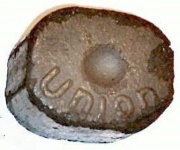Lignite
Description
A soft, brownish coal with a wood-like texture. Lignite, or wood coal, falls between Peat and bituminous coal in density and carbon content. Lignite deposits occur in the United States, Germany and the Netherlands. It contains up to 40% water and must be dried prior to use. Lignite is used to produce some brown colorants, such as Sap brown dye and Vandyke brown. Montan wax can be extracted from some lignites. Lignite is used to produce some petroleum-type products such as polyesters and polyamides. Also a process has been developed to reduce lignite to methanol for fuel. Jet is a very dense form of lignite.
Synonyms and Related Terms
Braunkohle (Deut.); lignite (Fr., It.); wêgiel brunatny (Pol.); lignito (Esp.); lenhite (Port.); brown coal; wood coal; Vandyke brown; Cologne earth
Physical and Chemical Properties
- G.S.Brady, Materials Handbook, McGraw-Hill Book Co., New York, 1971 Comment: p. 451
- Richard S. Lewis, Hawley's Condensed Chemical Dictionary, Van Nostrand Reinhold, New York, 10th ed., 1993
- Jack Odgen, Jewellery of the Ancient World, Rizzoli International Publications Inc., New York City, 1982
- R.F.Symmes, T.T.Harding, Paul Taylor, Rocks, Fossils and Gems, DK Publishing, Inc., New York City, 1997
- Wikipedia: http://en.wikipedia.org/wiki/Lignite (Accessed Jan. 15, 2006)
- Random House, Webster's Encyclopedic Unabridged Dictionary of the English Language, Grammercy Book, New York, 1997
- The American Heritage Dictionary or Encarta, via Microsoft Bookshelf 98, Microsoft Corp., 1998
- Art and Architecture Thesaurus Online, http://www.getty.edu/research/tools/vocabulary/aat/, J. Paul Getty Trust, Los Angeles, 2000
